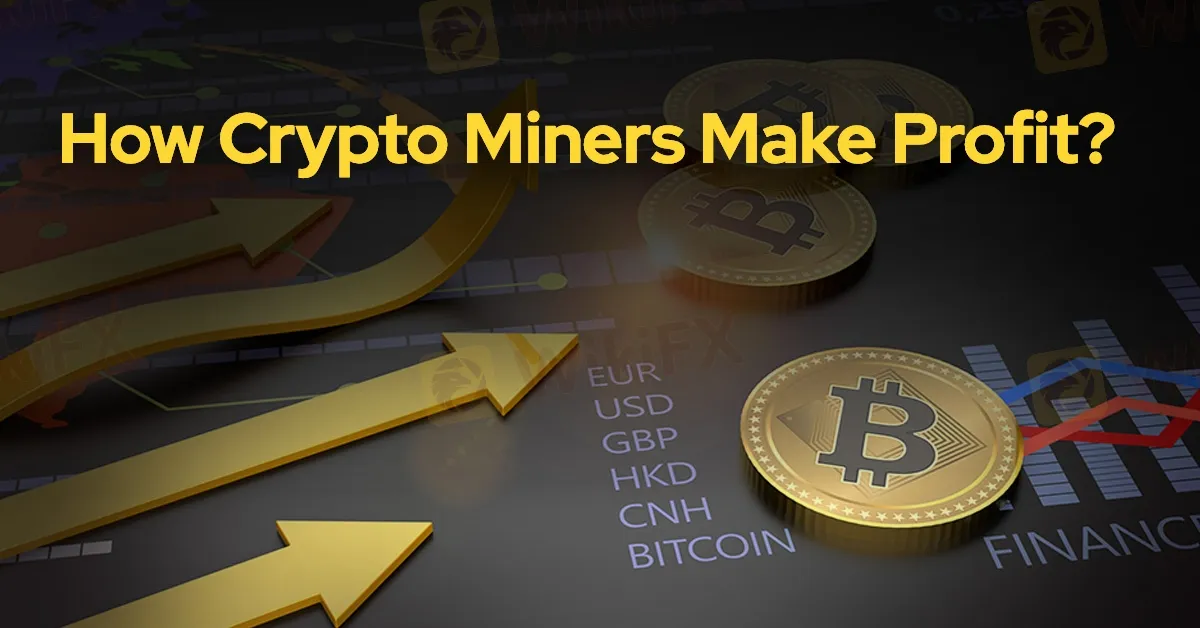简体中文
繁體中文
English
Pусский
日本語
ภาษาไทย
Tiếng Việt
Bahasa Indonesia
Español
हिन्दी
Filippiiniläinen
Français
Deutsch
Português
Türkçe
한국어
العربية
How Crypto Miners Turn Electricity into Profit?
Abstract:Crypto mining has evolved into a high-stakes industry, where profitability depends on multiple factors, including energy costs, mining difficulty, and hardware efficiency. So, how exactly do miners turn electricity into profit—and is it still worth the effort?

In the early days of Bitcoin, mining was a straightforward process that could be done from a personal computer, with enthusiasts reaping significant rewards. Today, the landscape has drastically changed. Crypto mining has evolved into a high-stakes industry, where profitability depends on multiple factors, including energy costs, mining difficulty, and hardware efficiency. So, how exactly do miners turn electricity into profit—and is it still worth the effort?
At its core, cryptocurrency mining is the process of verifying transactions and securing blockchain networks. Miners use specialised hardware to solve complex mathematical problems, competing against one another to validate blocks of transactions. The first to solve the puzzle earns the right to add a new block to the blockchain and is rewarded with freshly minted cryptocurrency—known as the “block reward”—along with transaction fees paid by users.
For Bitcoin miners, the current block reward stands at 3.125 BTC per block, though this figure is halved approximately every four years in an event known as the Bitcoin halving. Other cryptocurrencies, such as Ethereum before its transition to proof-of-stake, also relied on mining, but with different reward structures and consensus mechanisms.

While earning crypto rewards sounds lucrative, mining is far from a risk-free venture. The biggest challenge miners face is energy consumption. The computational power required to mine efficiently demands vast amounts of electricity, leading to high operational costs.
Miners also need cutting-edge hardware, such as ASIC (Application-Specific Integrated Circuit) miners, which are designed solely for mining. These machines are expensive, prone to rapid obsolescence, and generate enormous heat, requiring additional cooling systems.
Moreover, mining difficulty—a measure of how hard it is to solve a block—adjusts regularly based on network participation. As more miners join the network, the difficulty increases, reducing individual profitability.
Given the increasing competition, most miners today join mining pools, which are collective groups that combine computing power to increase the likelihood of earning rewards. When a pool successfully mines a block, the rewards are distributed among participants based on their contributed computational effort. This approach offers more consistent, albeit smaller, payouts compared to solo mining.
Crypto mining has come under scrutiny for its environmental impact. Governments in countries such as China, Kazakhstan, and Iran have cracked down on mining activities due to excessive energy consumption and grid disruptions. Others, like El Salvador, have sought sustainable alternatives, including geothermal energy-powered mining.
Regulations surrounding crypto mining are tightening globally, with some jurisdictions introducing stricter energy policies or requiring mining operations to be licensed. Such factors influence the overall feasibility of mining as a long-term investment.
For individual miners, the golden era of plug-and-play profitability is largely over. Today, large-scale mining farms with access to cheap electricity—often in regions with hydroelectric or renewable energy sources—dominate the industry. However, some small-scale miners still manage to turn a profit by optimising costs, using energy-efficient equipment, and participating in mining pools.
Ultimately, mining remains a high-risk, high-reward endeavour. Success hinges on factors such as electricity rates, hardware efficiency, crypto price volatility, and regulatory landscapes. While mining can still generate profits, it is no longer the easy money-making opportunity it once was. Aspiring miners must carefully weigh the costs against potential gains before investing in this complex digital economy.

Disclaimer:
The views in this article only represent the author's personal views, and do not constitute investment advice on this platform. This platform does not guarantee the accuracy, completeness and timeliness of the information in the article, and will not be liable for any loss caused by the use of or reliance on the information in the article.
Read more

Will a Stablecoin Bill Shape the Future of Crypto Regulation?
Stablecoin bill GENIUS Act advances to Senate with Trump’s support, aiming for a pro-growth crypto framework despite Warren’s consumer protection concerns.

California Cracks Down on Crypto Scams: 42 Websites Shut Down in $6.5M Bust
California Attorney General Rob Bonta announced earlier this week that the state had taken decisive action against fraudulent cryptocurrency operations. Authorities successfully shut down 42 scam websites responsible for deceiving investors out of at least $6.5 million.

Ripple Secures Dubai License: First Blockchain Payments Provider in DIFC
Ripple gains Dubai regulatory license, becoming the first blockchain payments provider in DIFC, boosting crypto innovation in the UAE.

Why Cryptocurrency is Truly the Future of Trading?
Benjamin Bilski unveils a new crypto platform aiming to solve market inefficiencies, with decentralized liquidity pools and AI-driven trading solutions.
WikiFX Broker
Latest News
How to Avoid Risks from Scam Brokers in Forex Investment
Will Trump's Trade Policies Fuel Inflation? BlackRock Warns of Economic Risks
Will a Stablecoin Bill Shape the Future of Crypto Regulation?
WikiFX "3·15 Forex Rights Protection Day" – Official Release of the Blacklist
Why Scammers Let You Win Before Taking It All
A Must-To-Watch Top Trading Pairs This 2025
Currency Calculator






